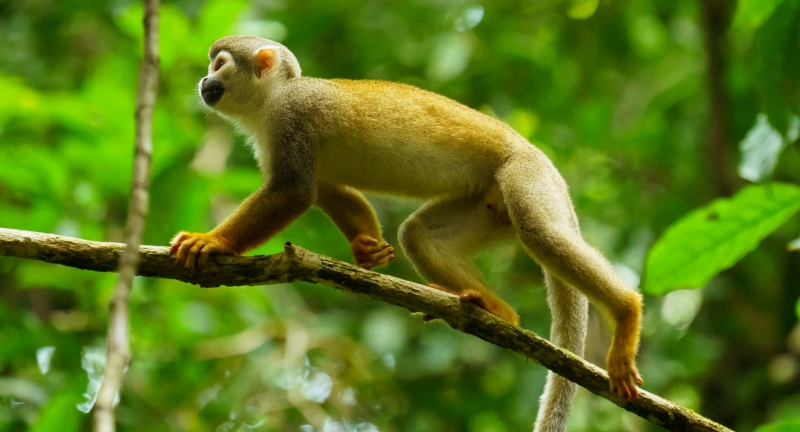The 2018 Tropical Conservation Semester spent an amazing two weeks in the Amazon rainforest of Ecuador, and had the incredible good fortune of spotting a jaguar (Panthera onca) on our final day! The top predator in the tropics, and the rarest mammal in the forest, jaguars are still relatively abundant in the unbroken forest of the Yasuni Biosphere Reserve. At least, that’s according to camera trap data … humans almost never get to see one in person. We glided past this adult female, reposed comfortably on the banks of the Tiputini River, and managed to watch her for almost a minute before she got to her feet (looking somewhat disgruntled about our interrupting her siesta!) and glided noiselessly into the forest.

During our time in the rainforest, students were treated to daily companionship by a troop of Common Woolly Monkeys that had taken up temporary residence in camp; in total we saw 8 species of monkeys! During hikes in the forest, and climbs to the top of the canopy, we were able to put binoculars on loads of parrots and macaws, clouds of hummingbirds, dazzling flocks of tanagers, and more than a handful of King Vultures (amazing!). Other highlights included huge tortoises, even more gigantic earthworms (3 feet in length!), tropical raccoons known as coatimundis, and pink river dolphins surfacing and blowing for air in the river. Students carried out ecological research projects for several days, studying the effects of a seed-killing beetle on palm trees, and the relationship between plant-killing ants and a curiously resistant fern.

Back in Quito, after updating social media accounts, writing up research results, and taking final exams, the course took a week-long spring break … a much-deserved rest for the students, who have been keeping busy in the field and the classroom. Up next, the start of the Marine Biology course, and a trip to the Galapagos Islands! Follow us on Twitter and Facebook to keep track of what we find in the Pacific Ocean!